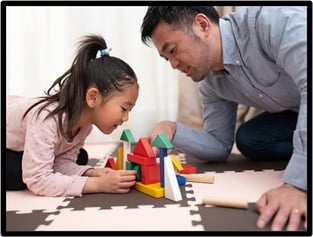What is child-led therapy? Child-led therapy is when we as the clinician follow the child’s lead and adapt our sessions using the preferred items, activities, and interests of the child we are working with.
For example, if a child wants to play with race cards and is working on core vocabulary, we might target words such as “go”, “stop”, “more”, and “finished” while playing.

Why child-led therapy?
Children learn best when they are interested so why would we not follow their lead? Joining in on their interests can help with joint attention and increased communication skills. It also leads to less resistance to therapeutic activities. Imagine how much more you will get out of the session following the child’s lead rather than having them “work for” preferred items!
How to implement child-led therapy?
Observe, wait, and listen. These three simple words will go a long way when interacting with children. Watch what they’re doing and think about how you can join in for optimal therapeutic gains. The child may not be using the toy/object in the way that we would, to address goals.
That is ok! Meet them where they are.
Are they vocalizing? Are they using imaginative play? How can you target their goals when you join in and play? Make connections. Get on their level and imitate them! Ask them if you can play! The children are more likely to pay attention to you and show interest if you are mimicking their actions. You can build on what is happening and what they are saying to foster language development. Child-led play can be taught to parents to carry over the skills being addressed in the speech therapy room to the home environment. Implementing child-led play and therapy for the first time may feel unnatural, but with practice, it will become more manageable, and you’ll start to see the gains!
Author: Camryn Hess, M.S., CCC-SLP
Image source:
https://raisingchildren.net.au/guides/activity-guides/imagination-and-make-believe/letting-your-child-lead-play

.png)
